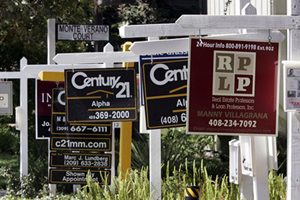

- Adopting private housing to increase the supply of low-rent housing

In order to solve the shortcomings of creating public housing, series of preferential policies was introduced by the US government in 1961 to encourage private homeowners to provide low-rent housing for low- and middle-income people. The government has further increased the supply of low-rent housing by absorbing private housing. Through tax and loan concessions, the government does not need direct capital investment or special financial allocation, which greatly reduces the burden.
However, the following problems exist in the acquiring of private housing: whether the private homeowner is willing to provide housing for low- and middle-income people. The quality and habits of the tenants will affect the homeowner's decision. Some homeowners are unwilling to accept the government's offer to provide cheap housing. Second, the selected homeowners may be reluctant to repair their houses because they have long-term stable tenants. This results in low- and middle-income people having to spend their own money to repair their houses. Sometimes this repair cost will even exceed the rent. The government subsidizes tenants by subsidizing landlords. This subsidy model has aroused controversy among economists. Many scholars believe that this approach has the problem of low efficiency and low actual benefits for target subsidies.
- Encourage private house purchases and improve housing security
The U.S. government also actively encourages low- and middle-income class to buy their own houses. The US government mainly adopts three methods help the low- and middle-income class for purchasing house: interest subsidies, loan guarantees and direct loans.
Interest subsidy: The Housing and Urban Development Act of 1968 provides subsidies for low- and middle-income families through interest subsidies, and proposes to help 1 million low-income families to obtain their own homes. The elimination case is aimed at families with an annual income of $3,000 to $6,500. For houses, the family only pays 25% of their income (30% after 1981 years), which reduces the mortgage interest to 1%. The bill also stipulates that the maximum limit of federal funding is to make up for the difference between the beneficiary family’s payment of mortgage interest rates other than 1%.
Loan guarantee: Guaranteed by the Federal Housing Administration and the Veterans Administration, buyers only need to pay the equivalent of 5% of the house price for the first payment, and they can get all the mortgage loans provided by the bank. If there is no guarantee, the buyer needs 20% of the housing price for first-time-payment: In the 1990s, the down payment for subsidized mortgages for low- and middle-income families was reduced to 3%. The "U.S. Down Payment Act" passed in 2004 even reduced the down payment to zero (low down payment or zero down payment plus mortgage securitization, to a certain extent, led to the outbreak of the subprime mortgage crisis)
- Use rent vouchers to directly subsidize tenants
Using rent vouchers to directly subsidize tenants is the main method currently adopted by the US government to subsidize low- and middle-income people. 60% of those eligible for subsidy choose this method. There are two types of subsidies: housing certificates (rental certification program) that began in 1974 and housing vouchers (rental preferential program) that began in 1983. These two methods have minor differences.
The federal government determines the subsidy amount according to the general rent level in the housing market. The local government housing bureau directly pays rent to the homeowner in the form of rent certificates or rent coupons after confirming the lease. Tenants pay no more than 30% of their own income, the rest of the rent will be remedied by the government. This method of subsidizing is recommended by economists because its subsidy efficiency is 100%. The United States also inevitably requires such a government guarantee model to be compatible with it. However, as the government subsidy funds are directly linked to the market, the rent will be much higher than its actual value when the housing market supply is far less than the demand. In this case, the government’s financial burden will increase. 2.3 A clear and effective tax system guarantees the order of the real estate market.
The United States is the country with the most complete real estate tax system among Western countries. Its real estate taxation is characterized by a wide tax base and fewer taxes. The US real estate tax system has been developed and practiced for more than 200 years, and the system is relatively complete. In the United States, real estate accounts for about 25% of a household total assets.
As a federal country, the tax management system of the United States is compatible with its political system. Real estate taxation has the following three characteristics:
The first characteristic is clear which help in ensuring effective implementation. U.S. real estate tax is based on the basic principle of "wider tax base and less tax types". After years of practice, the U.S. local tax system has formed a set of efficient tax collection and management procedures to ensure that real estate taxes are fully collected. For example, some cities stipulate that owners who pay real estate taxes early can enjoy certain reductions and exemptions, those who pay overdue taxes will receive fines, and those who refuse to pay taxes may have their properties confiscated. At the same time, real estate tax is also linked to preferential tax exemption policies. For example, when paying personal income tax with a higher tax rate, the tax base will be deducted and exempted according to the real estate tax that has been paid, so as to encourage real estate tax Taxation behavior.
In the United States, there is no real estate tax specifically levied on real estate rental income. Instead, the income from rental real estate is included in personal total income. Personal income tax is levied. Other related taxes are mainly classified under transaction tax, inheritance gift tax and income tax based on real estate transactions, inheritance, or gift and income.
Secondly, there are obvious regional differences. Each state adapts measures according to local conditions. 50 states in the United States currently levy real estate taxes, but the tax rates of each state and local government are different. Tax rates are ranging from 0.6% to 3%. Since real estate tax is set by the local government, the tax rate varies greatly from region to region. Even in the same region, different villages and towns may have different tax rates.
The real estate tax rate is not static. It is usually determined by the local government based on the annual fiscal revenue and expenditure budget. For example, in the states of California, Florida, Nevada, and Arizona, which suffered the most during the 2008 economic crisis, housing prices fell by approximately 55%. Therefore, real estate tax rates were lowered in varying degrees.

Third, taxes and fees serve the public welfare, forming a virtuous circle. Under the normal development of the real estate market, the annual increase in real estate tax will not be very large. As the most important source of income for local governments, real estate tax is mainly used to maintain local government expenditures and social services, such as fire protection, public security, justice, road maintenance, community cultural centers, parks, libraries, public education, etc. In the United States, real estate tax and public education are inseparable. Nearly half of the real estate tax is used for public elementary and secondary education. In affluent areas, housing prices are high and tax sources are abundant. School funding is relatively sufficient. Good schools promote the appreciation of local housing prices. All these factors form a virtuous circle. In recent years, in the use of real estate taxes, a new trend is to strengthen the coordinating role of the state government. For example, the state government takes away part of the real estate tax and then distributes it across the state. Relatively poor school districts can obtain more education funds.
The US real estate tax has a strict management process which is highly enforceable. Generally speaking, taxpayers’ individual tax returns are the key factors in U.S. Tax System, and tax management focuses on taxpayers’ compliance. In real estate tax, the tax authority has a great responsibility. Tax authorities keep property records, calculate taxes, issue tax bills, record payments, etc.
It can be seen that the management of real estate tax in the United States is simple but rigorous. Real estate will not escape the tax circle, and enforcement is not a problem. However, a weak point will be the assessment of real estate asset. Therefore, the government pays attention to tax assessment management and fairness, and emphasizes current use value, replacement cost and other assessment methods in the assessment.
In the process of urbanization in the United States, it was hardly affected by external factors such as wars and natural disasters. Intervention from government was also very limited. Therefore, the development of American real estate was mainly driven by the internal economy. The urbanization in the United States includes two stages: urban expansion and "post-urbanization" (the so-called suburbanization and metropolitanization) with the development of the real estate industry as an important driving force. Currently, the US real estate market is actually composed of three major markets: central cities, suburbs, and non-metropolitan areas.
Before 1920, the United States was in the early stage of urbanization. The development of the real estate industry was closely related to population needs with the following basic characteristics. Before 1920, affected by the process of industrialization, the American rural population flooded into cities. The proportion of urban population rose from 19.8% in 1860) to 512% in 1920, marking the completion of the rapid urbanization phase. With the changes in the industrial structure, urban employment opportunities have increased. The population has gathered in the cities, which has brought about a large demand for housing and promoted the rapid development of the real estate industry.
In the 80s, the emergence of operational elevators made it possible for buildings to break through the previous heights. Previously, people always thought that the sixth floor was the highest limit for people to walk up and down every day. The new steel structure, lightweight partitions and glass windows replaced the traditional load-bearing walls that could only bear a small amount of weight and volume. These factors allow the height of a building in the 80s to reach several hundred feet. Nowadays, large hotels have many floors. These hotels have become an important feature of the city center which had attracted a large number of business customers. Because of these hotels, the number of participants in meetings, social purposes, and leisure travelers has also increased greatly. More importantly, thousands of rooms have been added. Another innovation in urban land use is the emergence of a large number of multi-storey properties for retail trade, initially called dry goods or general stores, and called department stores in the 19th century. In the later part of the 19th century, larger and more spectacular department stores covered the entire urban area and spread in many cities as the main service provider in the city center. In many cases, these department stores have become the magnets of the real estate market.
With the development of urbanization, the population is gathering rapidly. Cities are becoming bigger and bigger. Public places and residential areas are becoming more and more separated from each other. Commuting, traffic congestion and transportation technology have become people’s increasing concerns. The government has begun to provide municipal services to promote the development of public facilities and the start of regulating private real estate development. At this time, a new form of state intervention in the private market and urban planning and management emerged. The real estate finance in the United States has also been initially developed." Throughout the 19th century to the 1920s, family housing loans were mainly provided by landowners, homeowners, and speculative builders, or by local investors (friends, relatives, and Money personal direct financing) network provision.
Various professional real estate finance companies have emerged one after another. Savings and loan associations have become the leader in residential loans, especially in the area of detached houses, specializing in promoting middle-income earners to build or own their own houses; life insurance companies and commercial banks dominated in business and industry loans, and mortgage.
With the rapid development of real estate, the voice of professionalism is getting stronger and stronger. In 1908, the American Association of Realtors was established. Public management of all participants in the brokerage industry. Since then, industry associations such as building owners and management committees and the American Mortgage Bankers Association have been continuously established, and the professionalization of the US real estate industry has continued to increase."

As the level of urbanization increases, the scale of central cities has become larger and larger, resulting in a series of diseconomies of scale, such as traffic congestion, soaring land prices, environmental pollution, deterioration of human settlements, etc. The power of "spillover" is driven by the upgrading of industrial structure and urban suburbanization. This stage originated in the 1920s and 1930s and strengthened in the 1940s and 50s. Technological progress, especially the introduction of automobiles into families, is a clear sign of this stage. Government guidance, such as the planning and construction of "green belts" and "satellite cities" or "new cities" have also played a powerful role in promoting.
After 1950, two-thirds of new houses were built in rapidly expanding suburbs, and the population of many urban centers began to decrease. Many of the original agricultural land was determined by the zoning plan as urban land, and suburbanization impacted the entire country. Subsequently, suburban shopping malls, suburban industrial parks, restaurants and car hotels have all been greatly developed. With the rapid expansion of the entire residential exhibition industry, the supports and promotes of the Federal Housing Administration and the Veterans Administration on large-scale housing construction, and the money from life insurance companies, savings and credit institutions, mutual savings banks and other sources, the sizes of some residential developers have expanded rapidly.
The spread out of urban functions and the moving of urban population to suburb have radically changed the concept of urban construction. Metropolitan suburbs are no longer a subsidiary of central cities, but important functional areas indispensable to metropolises. The construction of an integrated infrastructure network in the suburbs, including rail transit, highways, aviation hubs, seaport hubs, energy supply, water supply, sewage treatment, garbage treatment, etc. is an important task at this stage. The United States basically completed the stage of infrastructure establishing with high quality in the 1960s and 1970s.
Since the 70s and 80s, the urbanization level in the United States has reached more than 70%, entering a period of stability. In the stable phase, the United States began to show a trend of population migration to suburbs, and the development of urban agglomerations played an important role. The land price difference between suburban cities and the original commercial centers of large and medium-sized cities has caused many large companies to move their headquarters to suburban cities. The central area of urban functions is formed in the American suburbs. This change has brought large-scale employment opportunities in the suburbs. The original working lifestyle between the urban and suburban areas has been greatly changed. The suburban cities have become the main living and working spaces for many middle-class people. After the 1980s, the development of high and new technology brought more capital and technology to the suburbs and accelerated the development of suburban towns. As a result, many urbanization centers in the suburbs of the United States became satellite cities with multiple urban functions, thus forming cities group.
Since the 90s, with the rapid economic growth, the polycentric urban agglomeration formed by the traditional urban centers of the United States and its suburban fringe cities has expanded to its periphery. This trend has urbanized rural areas in the United States, starting from existing rural market towns. The reasons for this new round of urbanization are: (I) The growth of the fringe areas of large urban agglomerations is prompting urban residents working in fringe areas to relocate their homes to rural towns that can be reached within an hour by car. (2) Economic growth is urging the extension of main highways in metropolitan areas. This trend has led to the expansion of US investment in rural areas where main highways pass. At present, the three major metropolitan areas represented by the Greater New York area, the Great Lakes area and the Greater Los Angeles area account for 76% of the GDP of the United States, which is the result of the United States' implementation of the urban agglomeration economy for many years.
The positive promotion and support of relevant US government policies also play an important role in the development of the real estate industry. The U.S. government is pursuing a policy of large-scale aided highway construction. The highway network, especially the expressway network, has solved the traffic problems in the process of suburbanization. At the same time, it has implemented a long-term housing policy that is conducive to suburban development to encourage middle and high income earners District payment for building a house. In the 1950s, the government put forward a proposal to set up small cities in the suburbs; after the 1960s, the United States implemented a pilot program for demonstration cities to achieve decentralized urbanization. The U.S. federal government regards urban dispersion as the most important public policy and mainly adopts four measures. These forces form a synergy to push the suburbs to replace the city and become the center of the social economy. Among them, the housing policy in favor of the suburbs has played a very important role.